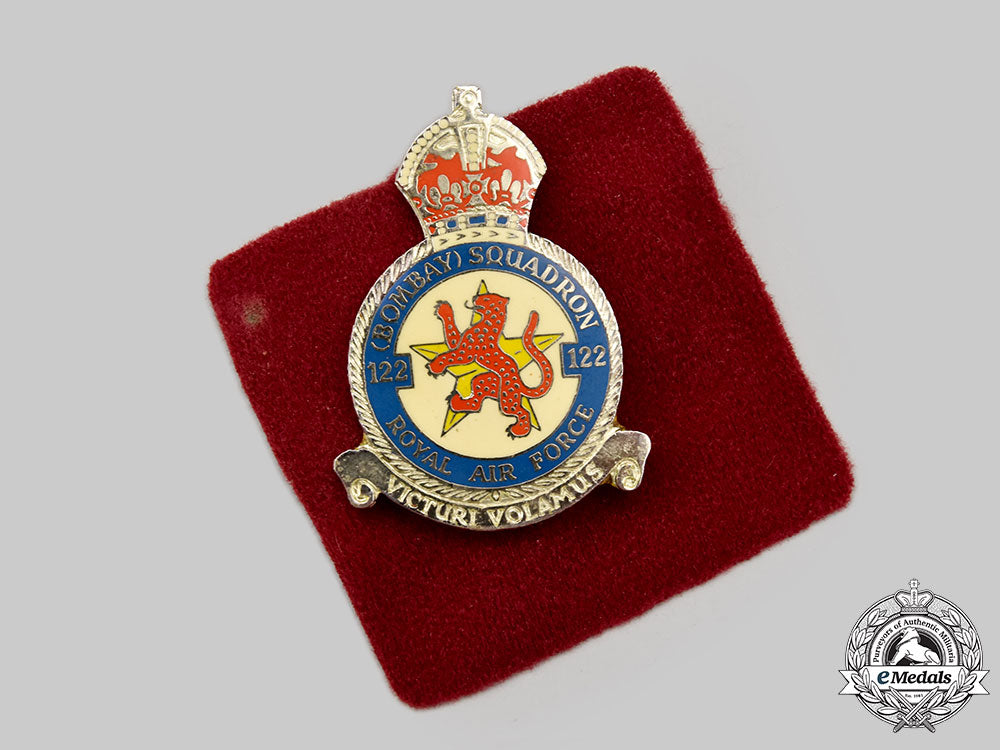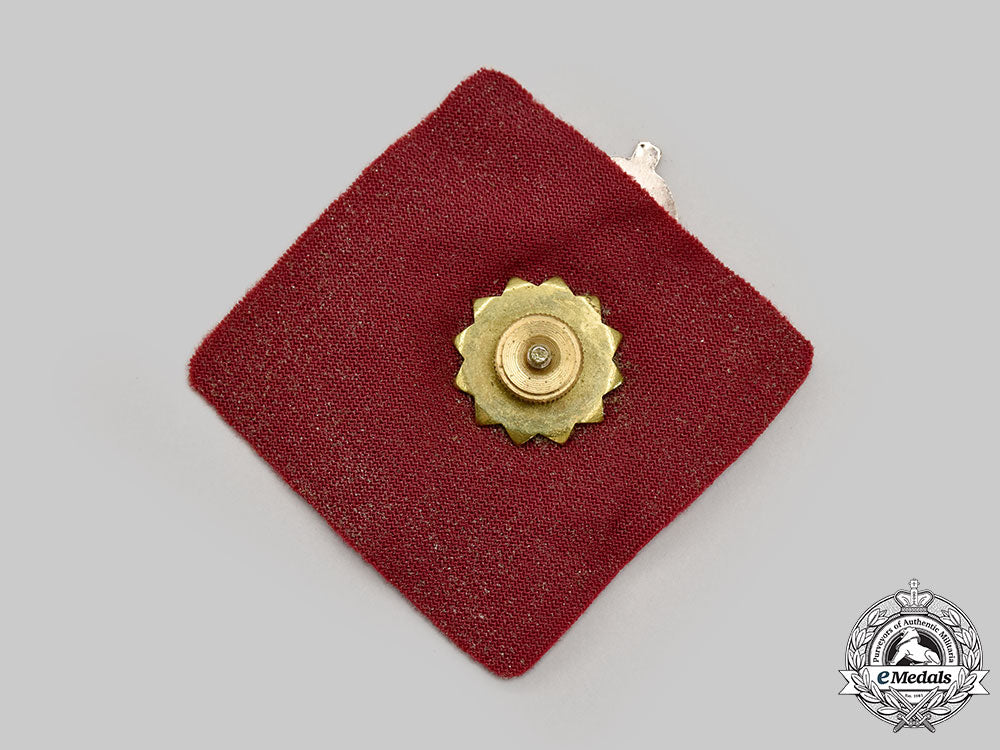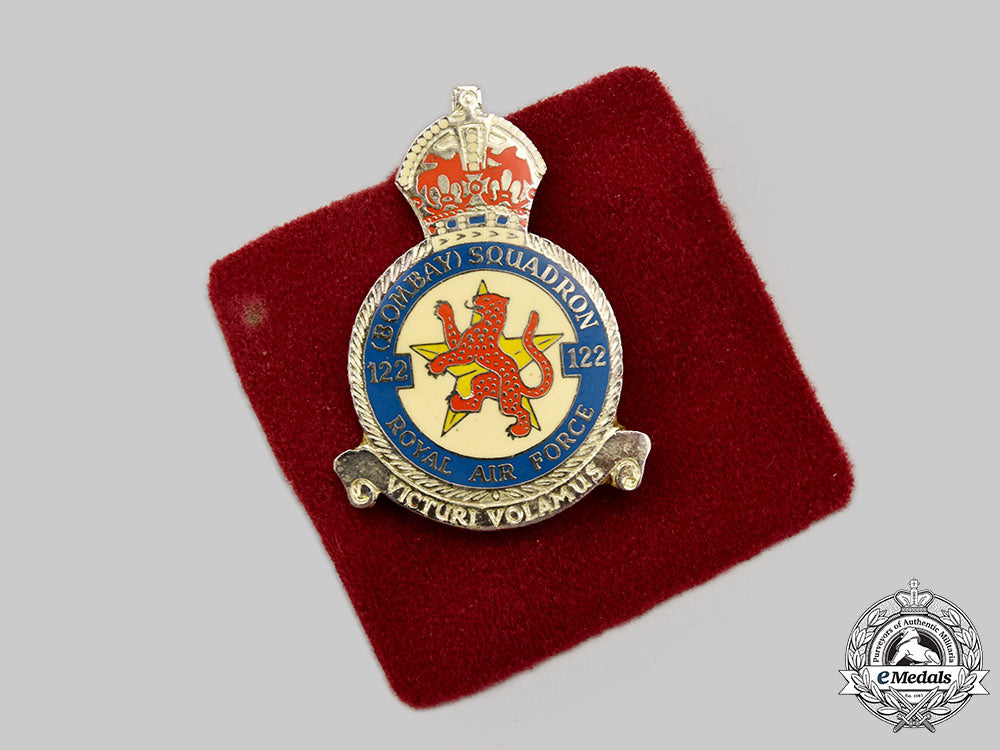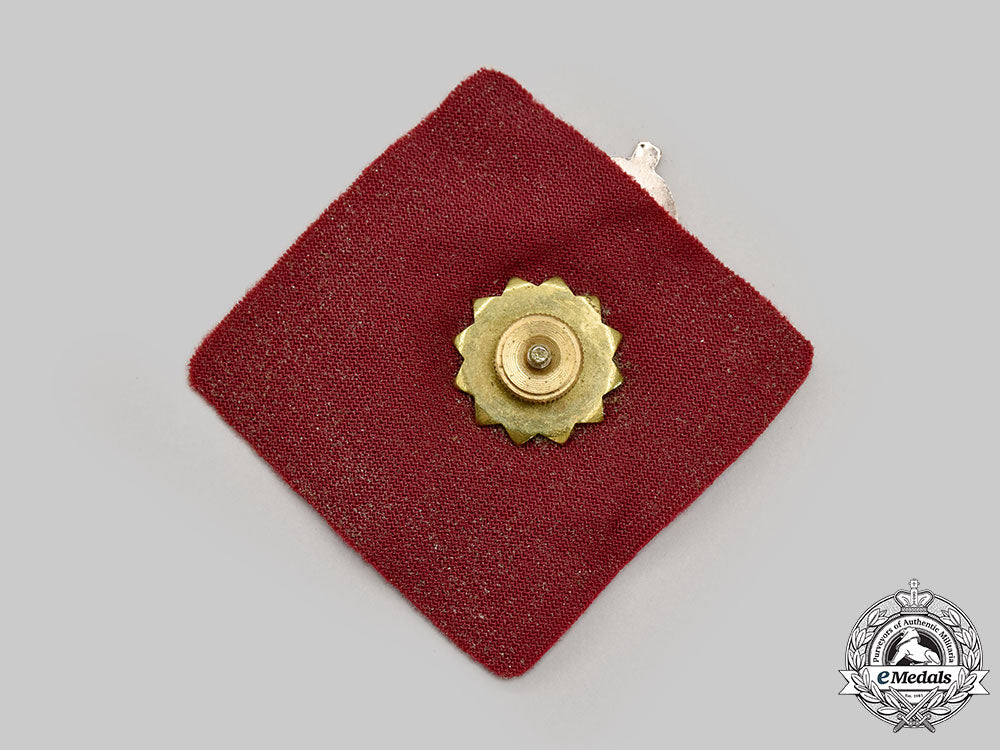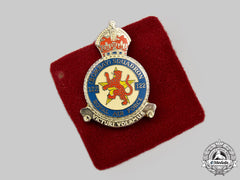
LOADING ...
In response to evolving domestic opinion, eMedals Inc has made the conscious decision to remove the presentation of German Third Reich historical artifacts from our online catalogue. For three decades, eMedals Inc has made an effort to preserve history in all its forms. As historians and researchers, we have managed sensitive articles and materials with the greatest of care and respect for their past and present social context. We acknowledge the growing sentiments put forth by the Canadian public and have taken proactive actions to address this opinion.
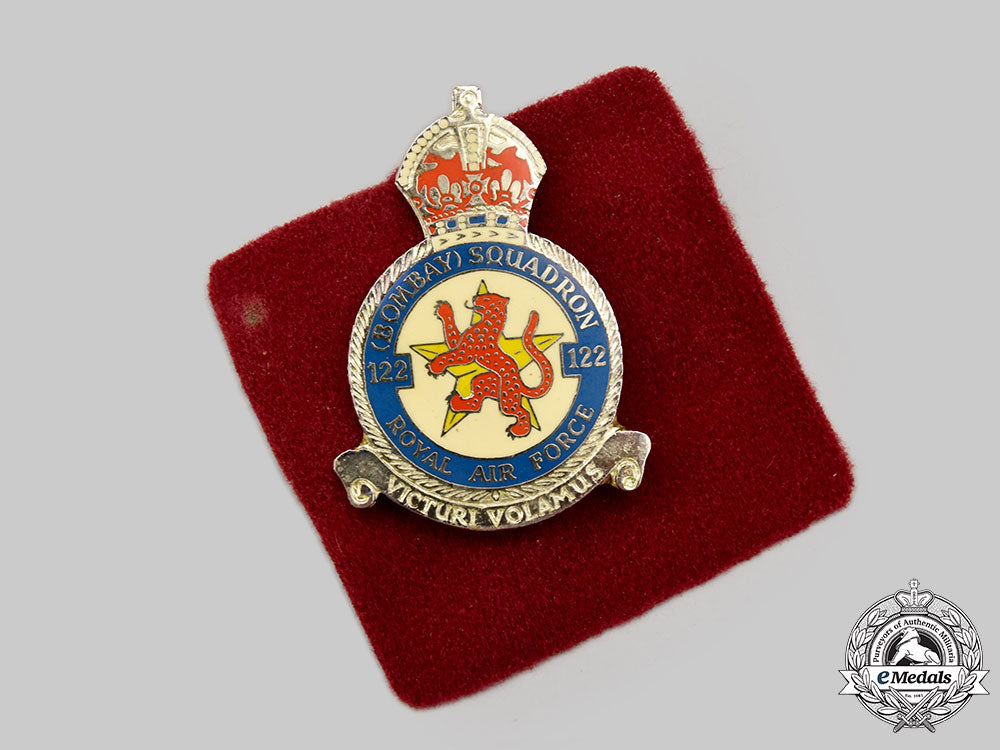
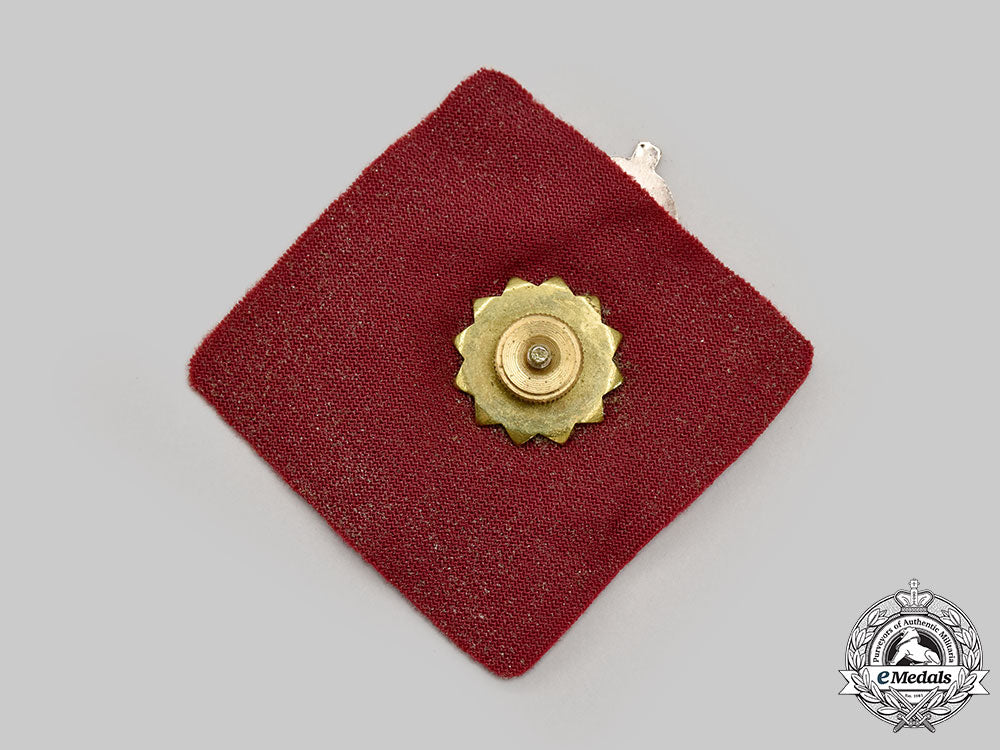
United Kingdom. Second War No. 122 Royal Air Force (Bombay) Squadron Badge
United Kingdom. Second War No. 122 Royal Air Force (Bombay) Squadron Badge
SKU: ITEM: M0502-18
Current Bid:
Your Max Bid:
Bid History:
Time Remaining:
Couldn't load pickup availability
Shipping Details
Shipping Details
eMedals offers rapid domestic and international shipping. Orders received prior to 12:00pm (EST) will be shipped on the same business day.* Orders placed on Canadian Federal holidays will be dispatched the subsequent business day. Courier tracking numbers are provided for all shipments. All items purchased from eMedals can be returned for a full monetary refund or merchandise credit, providing the criteria presented in our Terms & Conditions are met. *Please note that the addition of a COA may impact dispatch time.
Shipping Details
eMedals offers rapid domestic and international shipping. Orders received prior to 12:00pm (EST) will be shipped on the same business day.* Orders placed on Canadian Federal holidays will be dispatched the subsequent business day. Courier tracking numbers are provided for all shipments. All items purchased from eMedals can be returned for a full monetary refund or merchandise credit, providing the criteria presented in our Terms & Conditions are met. *Please note that the addition of a COA may impact dispatch time.
Description
Description
In silvered metal with red, white, blue and yellow enamels, measuring 35 mm (w) x 49 mm (h), brass support plate with grippers, brass screwback, secured in place to a 57 mm (w) x 57 mm (h) maroon wool swatch, intact enamels, extremely fine.
Footnote: No. 122 (Bombay) Squadron was a Royal Air Force fighter squadron during the First and Second World Wars. The squadron was formed on January 1, 1918 at Sedgeford as a day bomber unit with the Airco DH.4, the intention was to train the squadron for operations on the de Havilland DH.9 but the squadron disbanded without seeing action on August 17, 1918. The squadron was reformed at RAF Upper Heyford in October 1918 with the intent to operate the de Havilland DH.10 but the Armistice was declared before the squadron had any aircraft and it was disbanded without being operational on November 20, 1918. No. 122 was reformed in 1941 at RAF Turnhouse with the Supermarine Spitfire I to operate convoy patrols in the Firth of Forth, it soon moved south into England to become part of the Hornchurch Wing with cannon-equipped Spitfires and it flew sweeps over northern France and participated in the Dieppe operations. In 1942, František Fajtl became the squadron commander, the first Czech to lead a RAF squadron. In October 1942, it was re-equipped with the Spitfire IX and continued operations over France. In January 1944, it re-equipped with the North American Mustang to operate long-range bomber escort duties and it also attacked targets in France and the Low Countries. Within a few months the Mustangs were converted into fighter-bombers and the squadron started long-range ground-attack sorties into continental Europe. Under the command of Squadron Leader Ernest Joyce, it was heavily involved in D-Day operations and within a few weeks had moved to France to support the invasion. After three-months of intense operations the squadron was withdrawn to England and continued until the end of the war, providing long-range escorts to both Bomber Command and the United States 8th Air Force. After the end of the war, the squadron was re-equipped with the Spitfire F21 but was disbanded at RAF Dalcross on April 1, 1946 when it was renumbered No. 41 Squadron.
Description
In silvered metal with red, white, blue and yellow enamels, measuring 35 mm (w) x 49 mm (h), brass support plate with grippers, brass screwback, secured in place to a 57 mm (w) x 57 mm (h) maroon wool swatch, intact enamels, extremely fine.
Footnote: No. 122 (Bombay) Squadron was a Royal Air Force fighter squadron during the First and Second World Wars. The squadron was formed on January 1, 1918 at Sedgeford as a day bomber unit with the Airco DH.4, the intention was to train the squadron for operations on the de Havilland DH.9 but the squadron disbanded without seeing action on August 17, 1918. The squadron was reformed at RAF Upper Heyford in October 1918 with the intent to operate the de Havilland DH.10 but the Armistice was declared before the squadron had any aircraft and it was disbanded without being operational on November 20, 1918. No. 122 was reformed in 1941 at RAF Turnhouse with the Supermarine Spitfire I to operate convoy patrols in the Firth of Forth, it soon moved south into England to become part of the Hornchurch Wing with cannon-equipped Spitfires and it flew sweeps over northern France and participated in the Dieppe operations. In 1942, František Fajtl became the squadron commander, the first Czech to lead a RAF squadron. In October 1942, it was re-equipped with the Spitfire IX and continued operations over France. In January 1944, it re-equipped with the North American Mustang to operate long-range bomber escort duties and it also attacked targets in France and the Low Countries. Within a few months the Mustangs were converted into fighter-bombers and the squadron started long-range ground-attack sorties into continental Europe. Under the command of Squadron Leader Ernest Joyce, it was heavily involved in D-Day operations and within a few weeks had moved to France to support the invasion. After three-months of intense operations the squadron was withdrawn to England and continued until the end of the war, providing long-range escorts to both Bomber Command and the United States 8th Air Force. After the end of the war, the squadron was re-equipped with the Spitfire F21 but was disbanded at RAF Dalcross on April 1, 1946 when it was renumbered No. 41 Squadron.
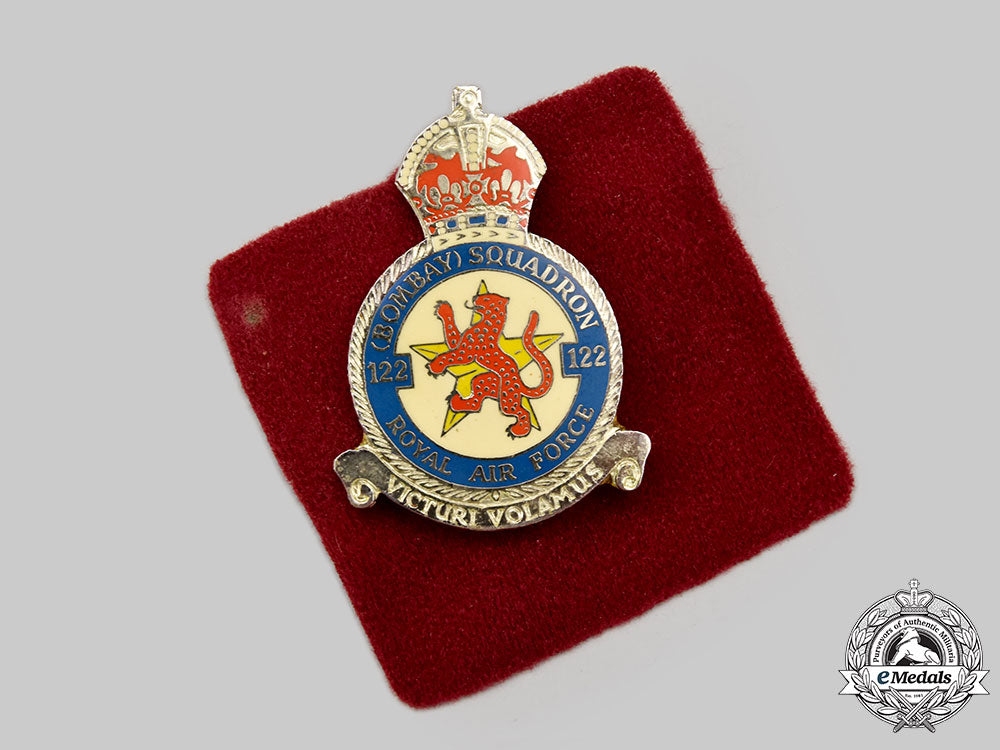
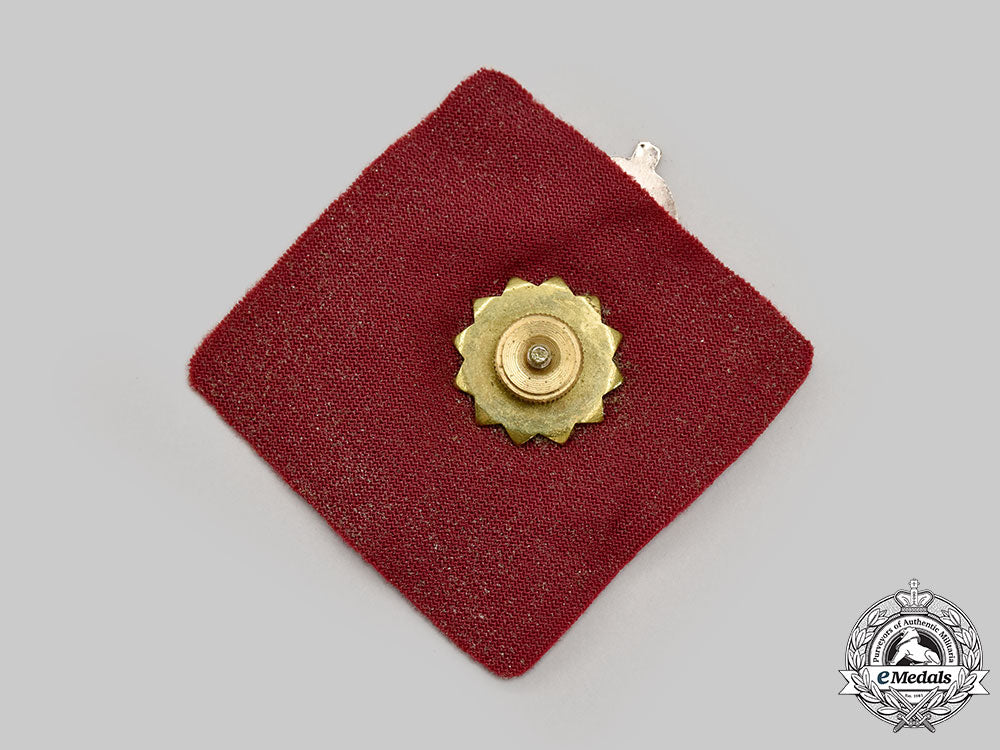
You May Also Like
Germany, HJ. A 1938 National Trade Competition Victor’s Badge, Gold Grade in Case, By Gustav Brehmer
G60096
Italy, Republic. An Order of Merit of the Italian Republic, Grand Cross Set by Johnson, 1970
EU23677
Spain, Franco Period. An Order of Civil Merit, Grand Cross Set
EU23731
Russia, Imperial. An Order of St. Anne, II Class in Gold
EU23720
Austria, Imperial. An Order of the Iron Crown, III Class in Gold, by Rothe, c.1900
EU23723
-
Germany, HJ. A 1938 National Trade Competition Victor’s Badge, Gold Grade in Case, By Gustav Brehmer
G60096
Add to CartRegular price $3,950 USDRegular price $0 USD Sale price $3,950 USDUnit price / per -
Italy, Republic. An Order of Merit of the Italian Republic, Grand Cross Set by Johnson, 1970
EU23677
Add to CartRegular price $950 USDRegular price $0 USD Sale price $950 USDUnit price / per -
Spain, Franco Period. An Order of Civil Merit, Grand Cross Set
EU23731
Add to CartRegular price $600 USDRegular price $0 USD Sale price $600 USDUnit price / per -
Russia, Imperial. An Order of St. Anne, II Class in Gold
EU23720
Add to CartRegular price $2,950 USDRegular price $0 USD Sale price $2,950 USDUnit price / per -
Austria, Imperial. An Order of the Iron Crown, III Class in Gold, by Rothe, c.1900
EU23723
Add to CartRegular price $3,950 USDRegular price $0 USD Sale price $3,950 USDUnit price / per
Do you have a similar item you are interested in selling?
Please complete the form and our client care representatives will contact you.
Sell Item